LEARN / ARTICLE
Clean Air Victory: Kinderfun School Experiences 85% Improvement
CAZ Stories is a series of articles highlighting the significant impact of Clean Air Zones on diagnosing and improving indoor air quality issues for businesses in Indonesia. For more information, read our previous case studies:
- AC Ventures
- Mighty Minds Preschool
- Global shipping company
- Mazars Indonesia
- IShine Kelapa Gading
- YCAB Foundation
- New Zealand School
Air pollution remains a significant issue for many countries, including Indonesia to this day. Particularly in regions with the highest pollution levels such as Jakarta, where the average pollution level in 2023 reached 38 µg/m3, surpassing the annual National Ambient Air Quality Standards of 15 µg/m3. This figure is nearly 8 times higher than the WHO annual guidelines.
WHO identifies PM2.5 as a hazardous pollutant. This is not without reason, as its size is so small that it can easily enter the lungs when we breathe. PM2.5 poses a threat to the entire general population, but the risk is much higher for vulnerable groups, including children under five and adults over sixty.
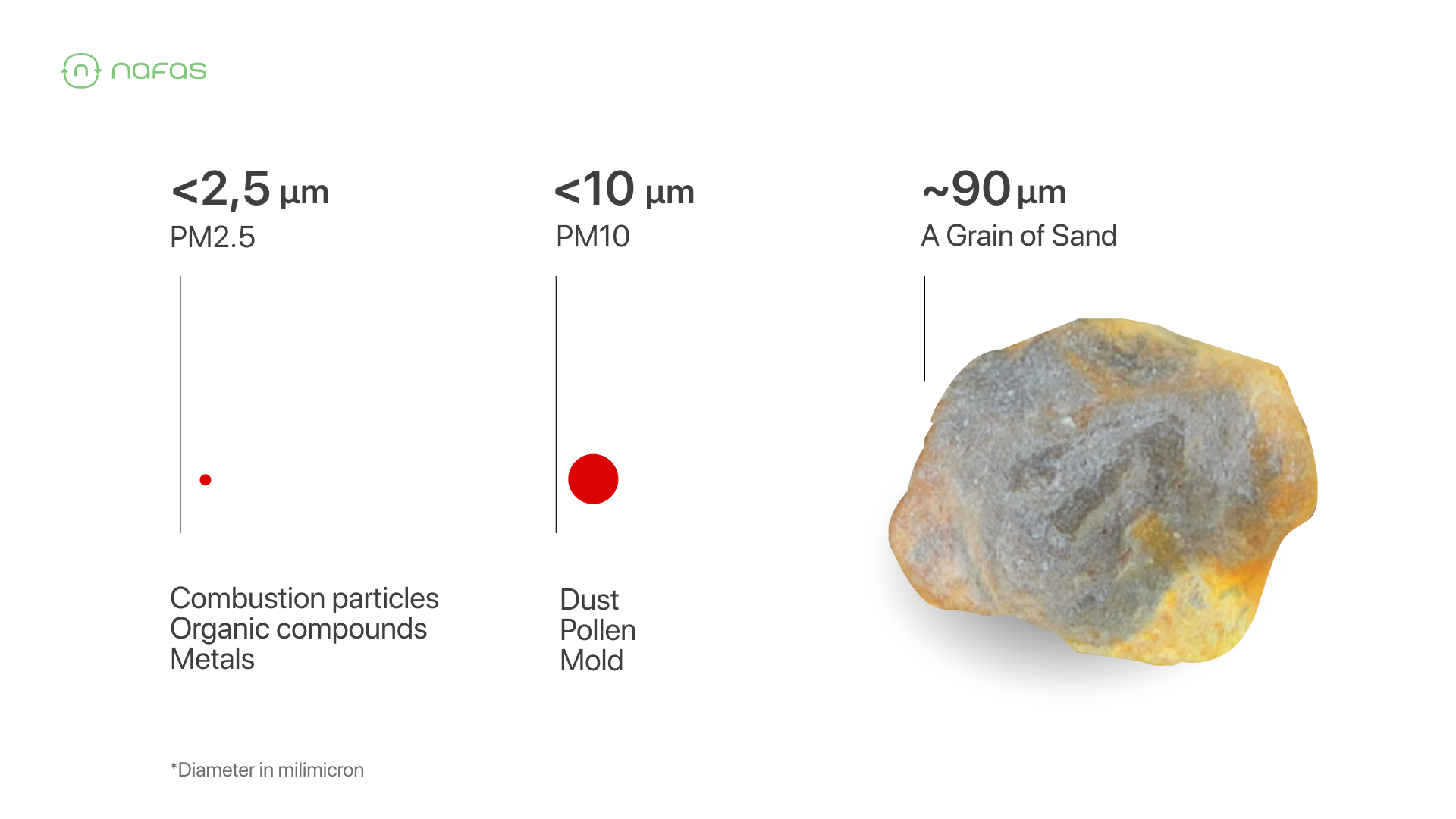
Based on tests conducted by the Nafas team in the field, the leakage of outdoor air pollution into buildings can reach up to 100%. This is a cause for concern, especially for residents in highly polluted cities like Jakarta.
Nafas published an article titled "Our Buildings Make Us Sick," highlighting the fact that air pollution is not only an outdoor problem but also an indoor one. In highly polluted cities, indoor air quality is often as high as outdoor air quality, meaning outdoor air pollution can infiltrate buildings and contaminate the air we breathe. This can occur in various buildings, from homes and offices to our children's schools.
Impact of Air Pollution on Children in Schools
A study published in the Kosin Medical Journal by researchers from South Korea and Japan investigated the short-term effects of PM2.5 on children. The research revealed a 9% increase in the risk of asthma attacks in children when the concentration of PM2.5 rises by 10 μg/m³ from the baseline of 15 μg/m³ on the day before the asthma attack (Lee et al., 2018).
In response to this issue, Nafas collaborated with Kinderfun to enhance indoor air quality at the school, aiming to create a healthy environment for students, teachers, and school staff.
The Challenge: Unhealthy Air Quality at Kinderfun School
To assess the extent of outdoor air pollution leakage into the classrooms of Kinderfun, Nafas utilized air quality monitors connected to a cloud-based system. These devices were tasked with monitoring levels of PM2.5, CO2 concentration, temperature, and humidity.
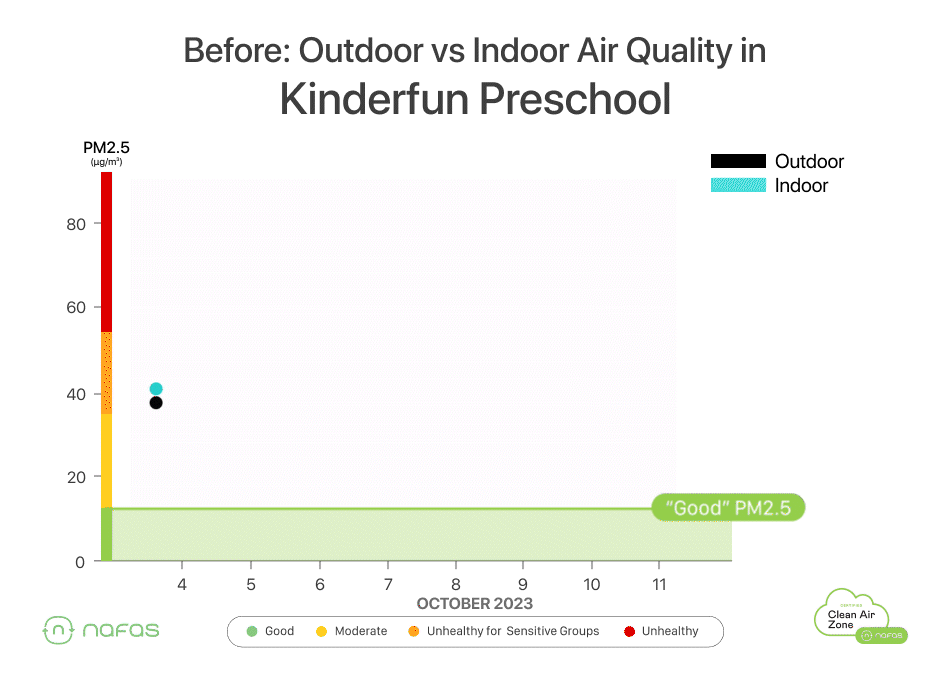
During the diagnostic phase, the results were alarming: the levels of outdoor and indoor air pollution were nearly identical. From the air quality data collected within Kinderfun in October, both trends of pollution levels, both indoors (depicted by the blue line) and outdoors (represented by the black line), were consistently high. Pollution levels often exceeded 15 μg/m³, the recommended 'Good' air quality limit according to the study.
Field test results revealed peaks of PM2.5 within Kinderfun classrooms reaching 80 µg/m³, more than 5 times the maximum limit recommended by the study, which is 15 µg/m³!
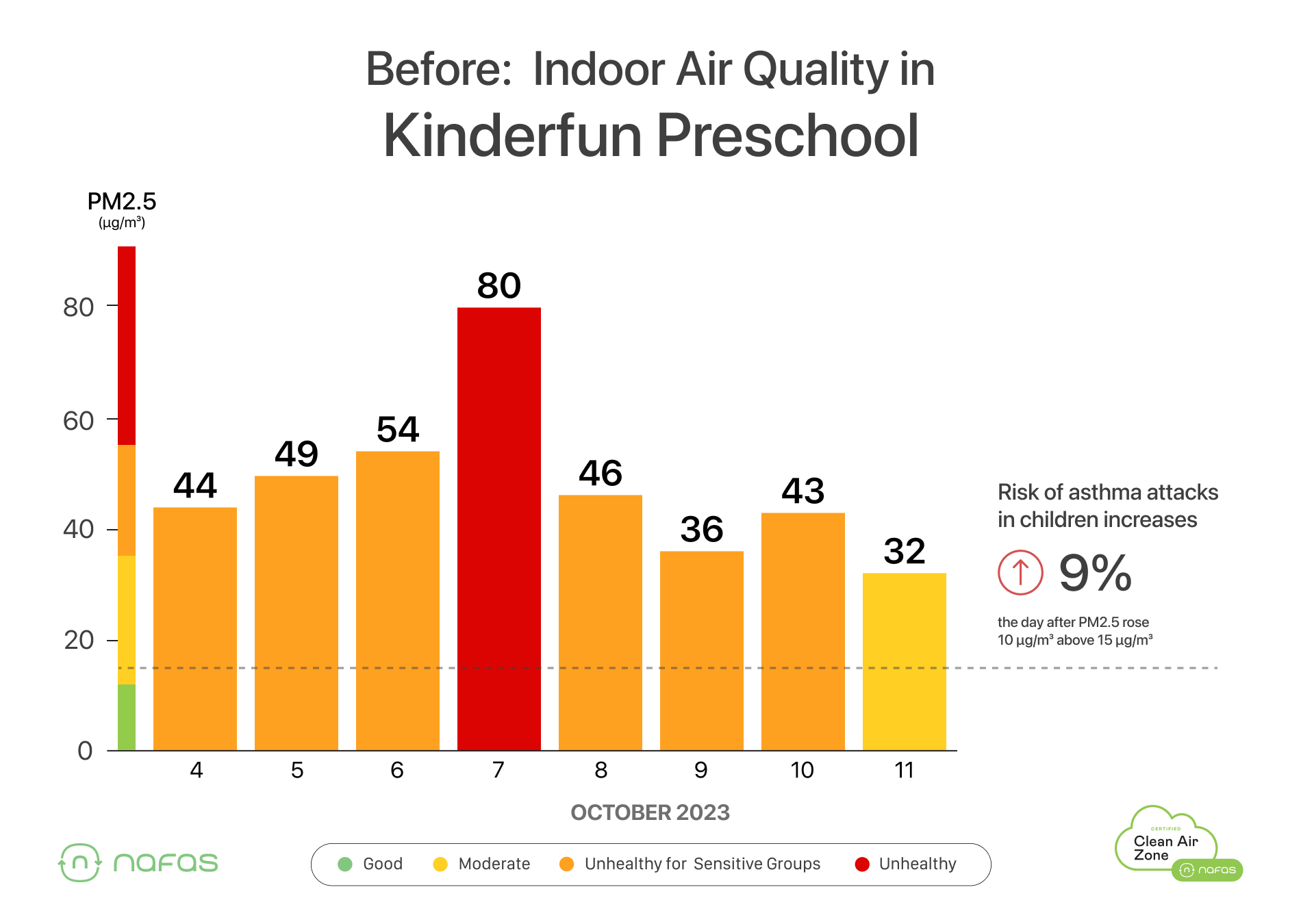
The school infrastructure is incapable of filtering external pollution and maintaining a healthy indoor air quality in classrooms. This situation clearly highlights the urgent need to introduce air purifiers in the school to create a healthy learning environment for students, teachers, and school staff.
Throughout the diagnostic period, Nafas utilized the gathered data to create an AirScore as an assessment reflecting the health of indoor air quality in that location.
The final AirScore for this school is 'D', indicating that the indoor air quality in the school is unhealthy and requires intervention to address the existing air pollution issues.
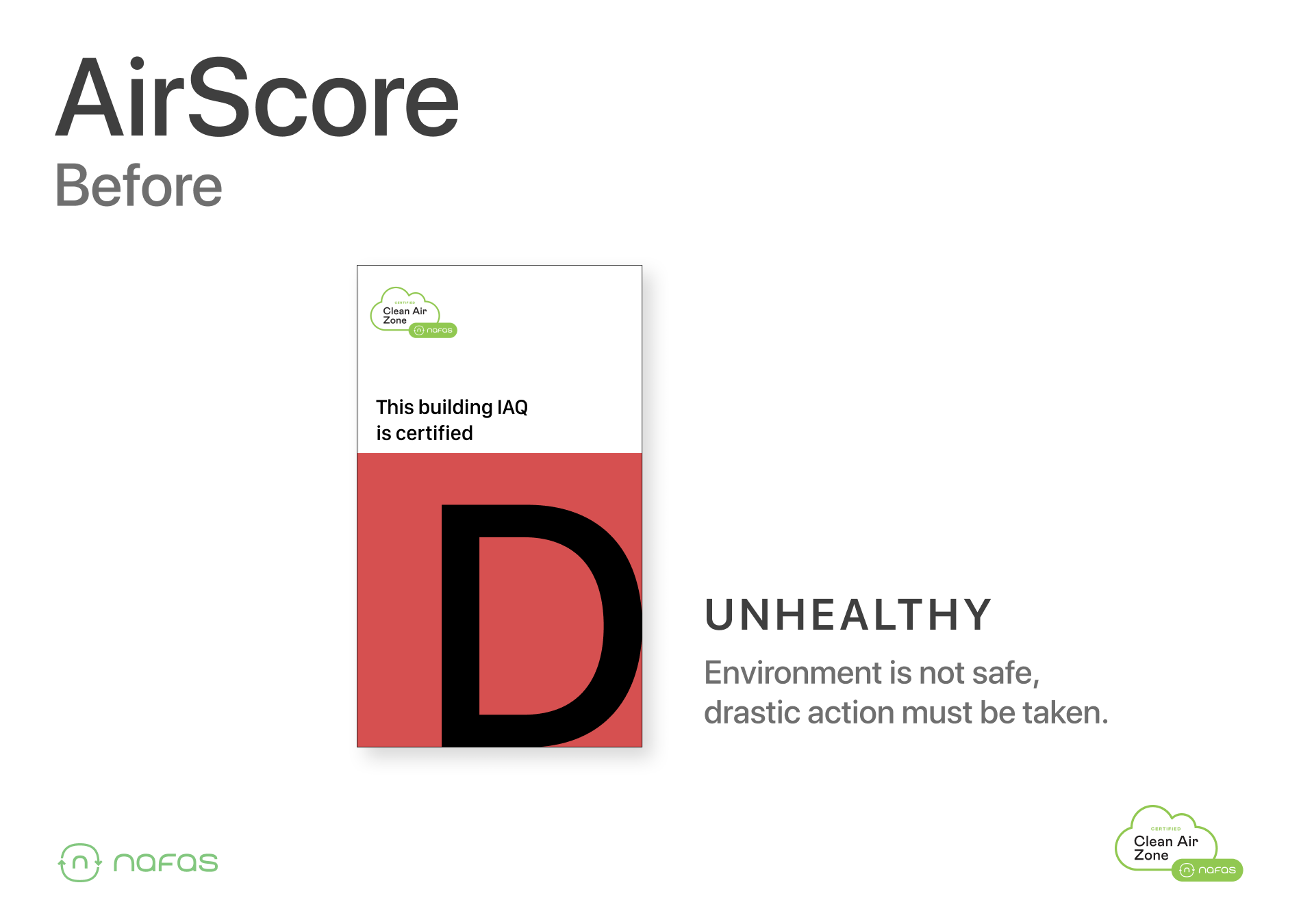
The Solution: Transforming Kinderfun Into a Clean Air Zone
To address the poor indoor air quality in buildings in heavily polluted cities like Jakarta, Nafas has developed the Clean Air Zone system. This ecosystem is comprehensively designed to maintain healthy indoor air quality throughout operational hours. This can be achieved through an automated and integrated system that includes accurate air quality measurements, effective air filtration techniques, robust certification standards, and data-driven programs involving relevant stakeholders.
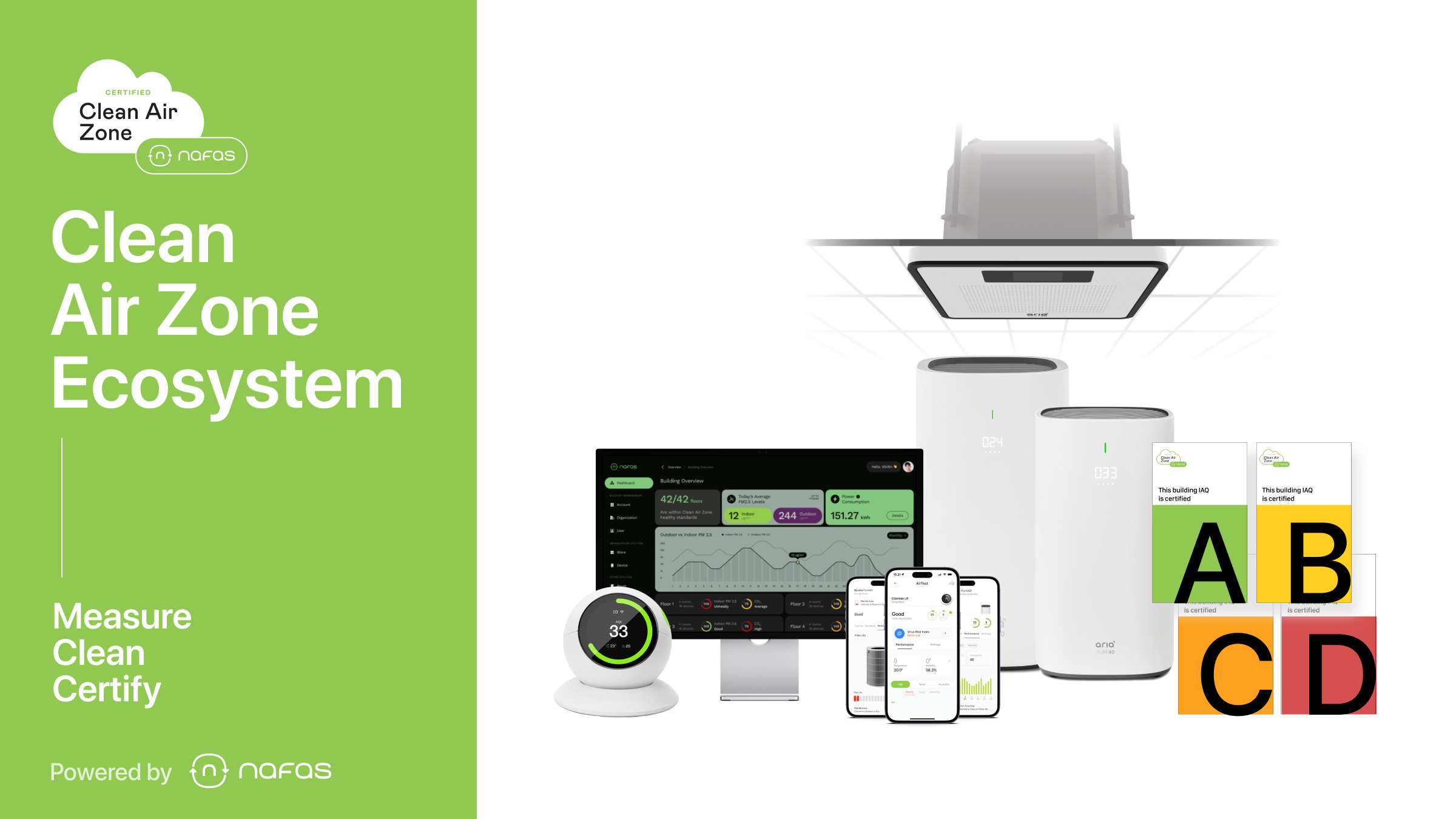
Our services are available through a subscription model without upfront investment. The Clean Air Zone ecosystem can help improve indoor air quality in schools easily and conveniently.
Results: Drastic Reduction in Pollution at Kinderfun
In November 2023, Kinderfun officially became a Clean Air Zone. The collaboration between the school and Nafas highlights the importance of healthy air in school classrooms.
From the data, it is evident that the Clean Air Zone ecosystem successfully maintained healthy indoor air quality in Kinderfun classrooms throughout school hours.
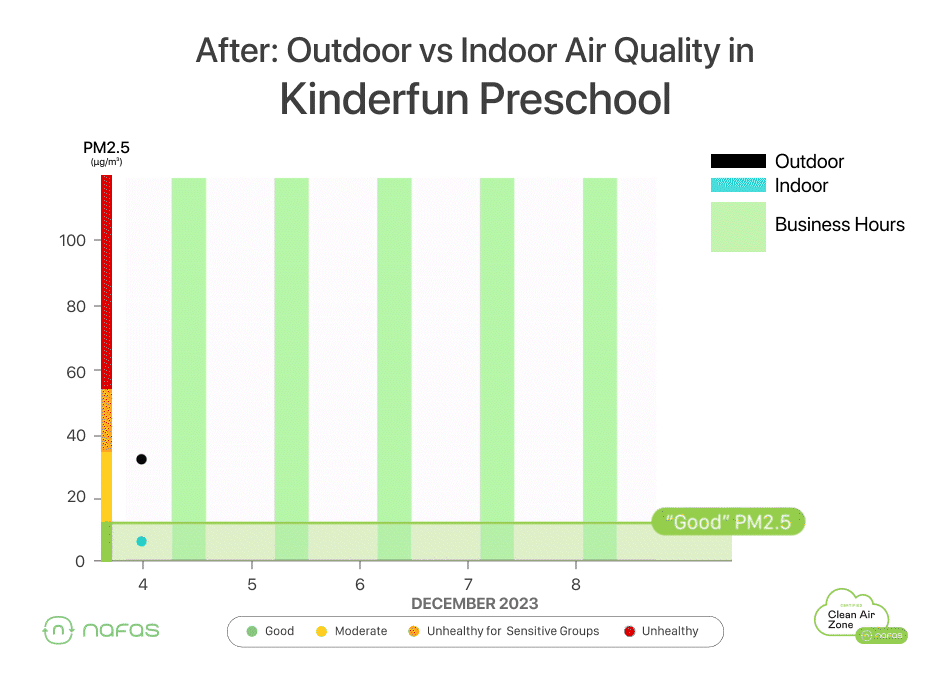
The air quality data illustrates a significant contrast in indoor air quality before and after Kinderfun became a Clean Air Zone, as well as during and after school hours.
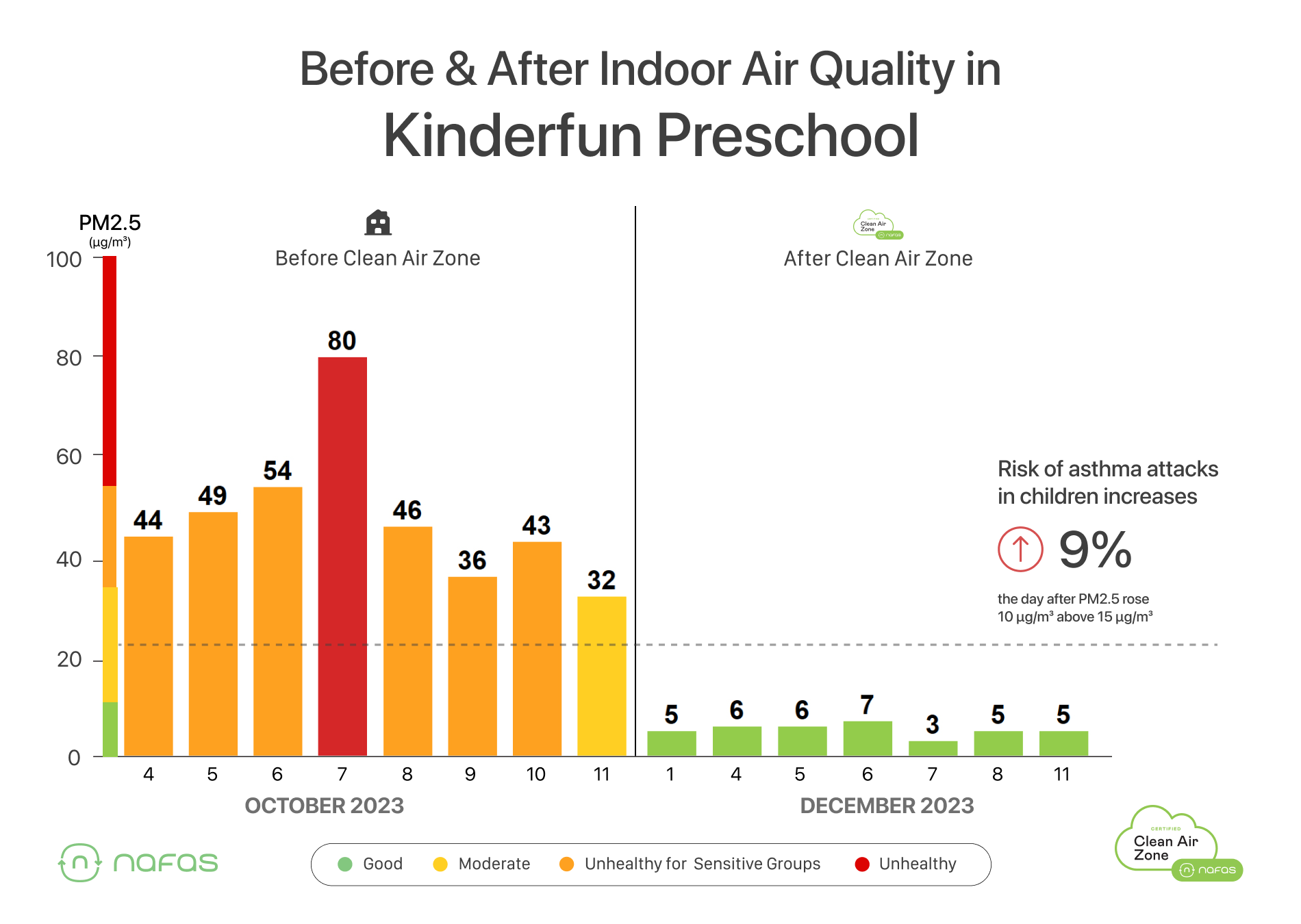
This proactive approach to reducing students' exposure to air pollution has notably elevated their AirScore from 'D' to 'A' at their school, while minimizing the health risk, notably asthma attack, on children.
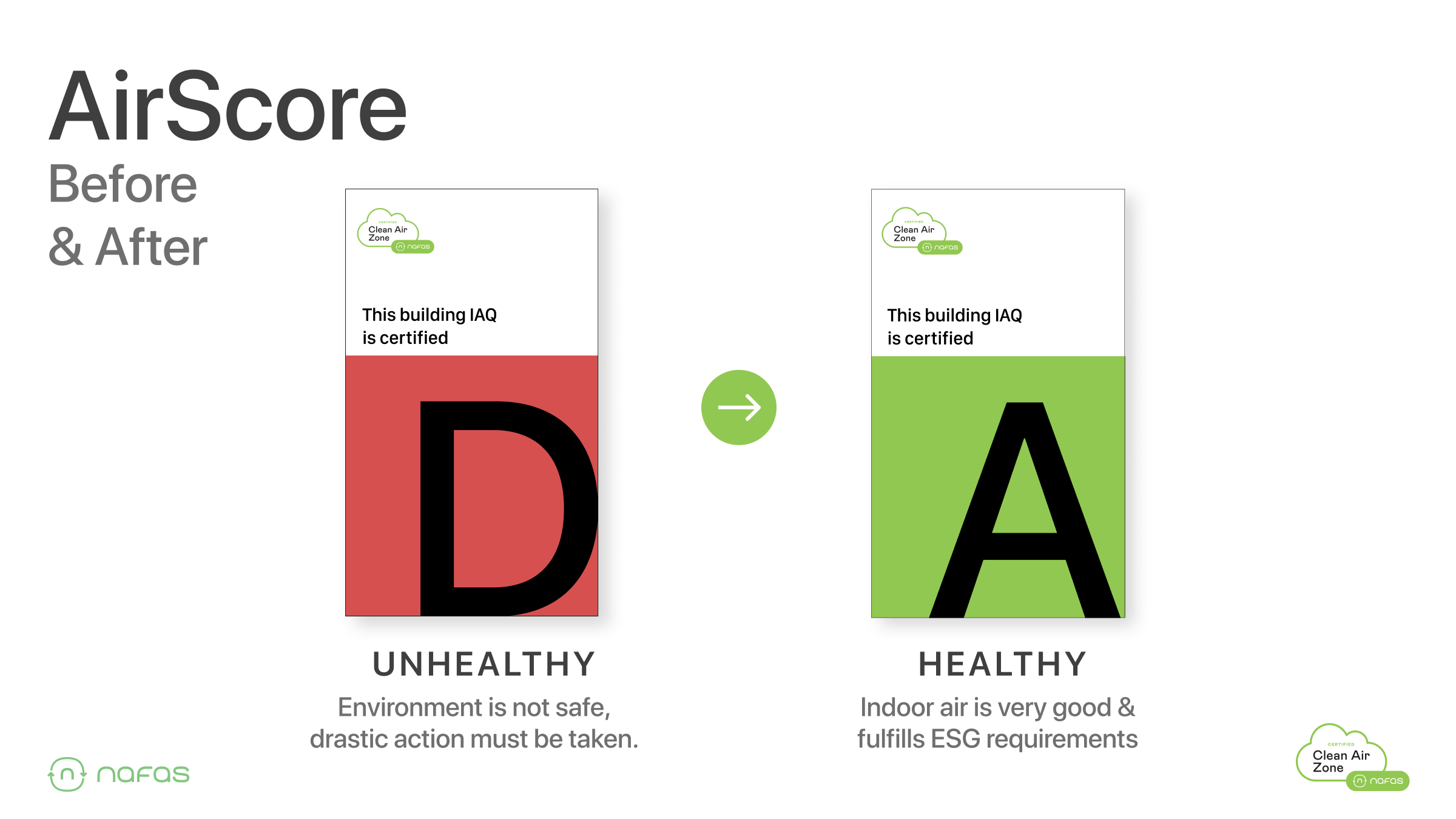
Monthly Air Quality Report
Through the data-driven Clean Air Zone service, Kinderfun will receive a monthly report containing air quality metrics for the preceding month. The school can share this information with parents, teachers, staff, and stakeholders. Below is an example of the report received by the school each month:

Becoming a Clean Air Zone is simple
Interested in ensuring the health of the air quality in your school? Feel free to contact us at [email protected] or click the link below to join our mission to make clean air the standard in our children's schools!
